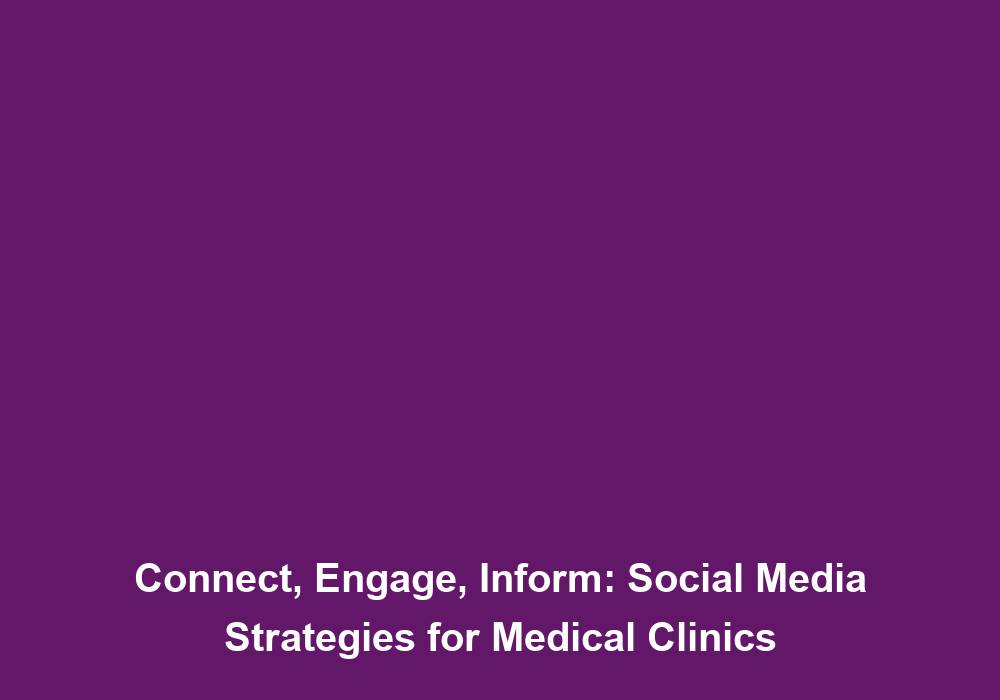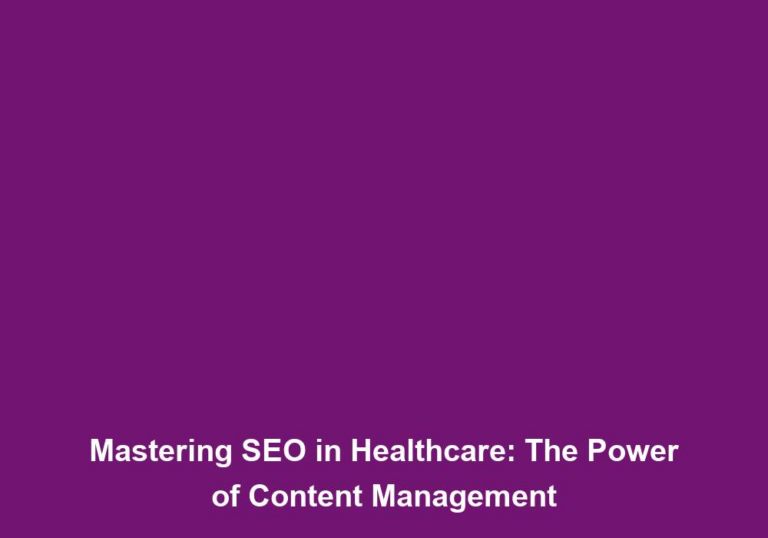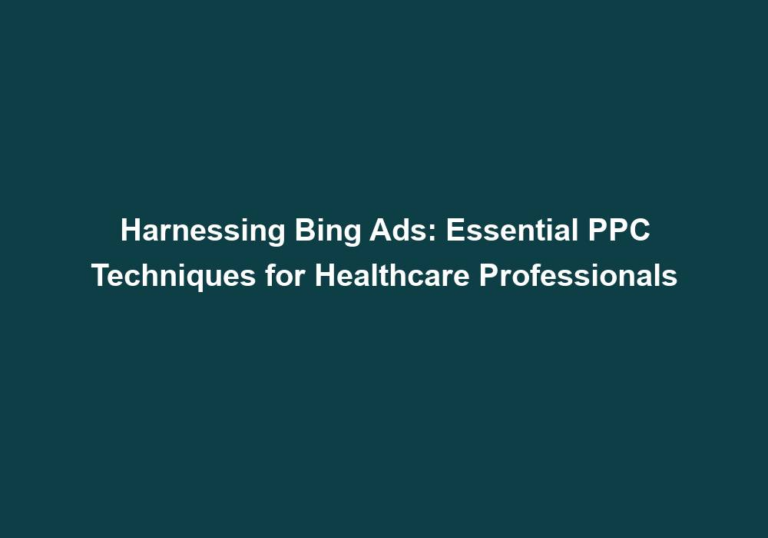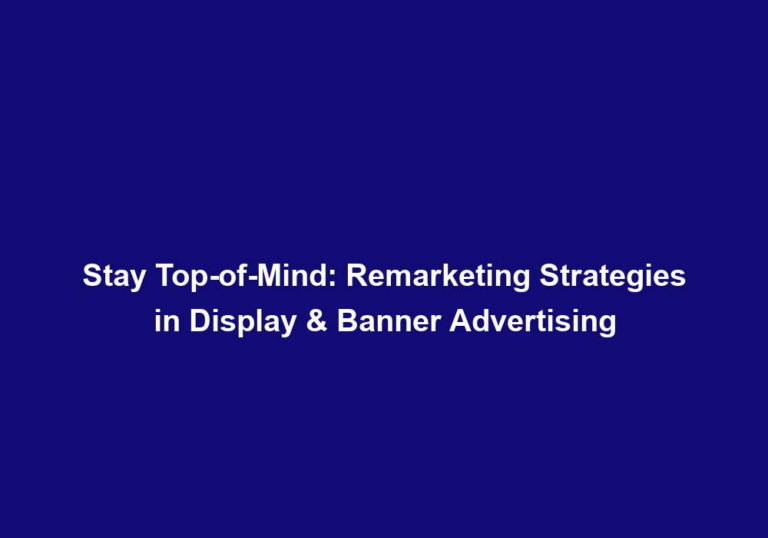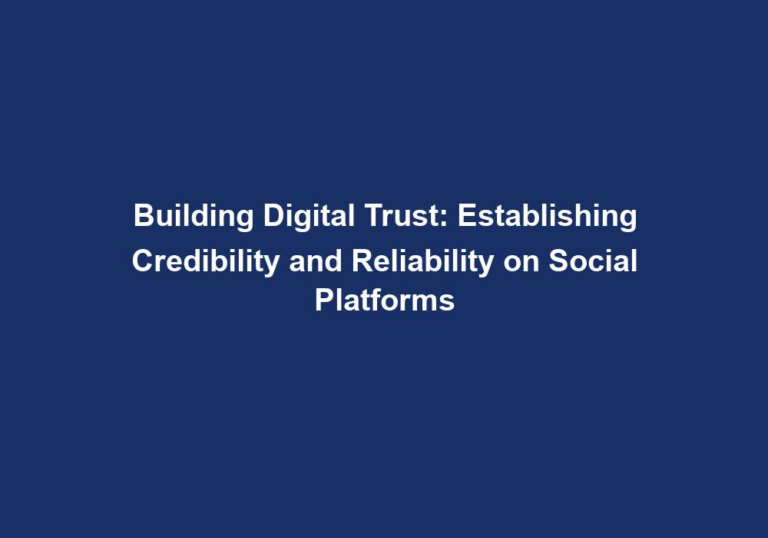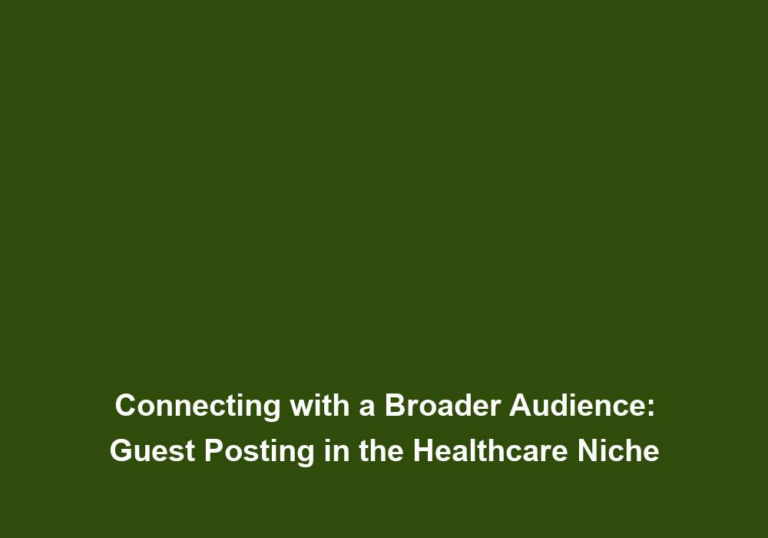Connect, Engage, Inform: Social Media Strategies for Medical Clinics
In today’s digital age, social media has become an integral part of our daily lives. It has revolutionized the way we connect, engage, and inform ourselves and others. For medical clinics, harnessing the power of social media can be a game-changer in reaching out to existing and potential patients, establishing credibility, and sharing valuable healthcare information. In this article, we will explore effective social media strategies for medical clinics to connect, engage, and inform their audience.
1. Define Your Goals and Target Audience
Before diving into social media activities, it is crucial to define your goals and identify your target audience. This will provide a clear direction for your social media efforts and help you tailor your content and strategies accordingly.
Here are some tips for defining your goals and target audience:
-
Determine what you want to achieve through social media. Are you looking to increase brand awareness, drive more patient appointments, or establish thought leadership? Understanding your goals will guide your content creation and engagement strategies.
-
Research and analyze your target audience. Who are your ideal patients? What are their demographics, interests, and pain points? This information will enable you to create content that resonates with their needs and interests.
-
Use social media analytics tools to gain insights into your current audience. Identify the platforms they are most active on and the type of content they engage with the most. This data will help you optimize your social media presence.
2. Choose the Right Social Media Platforms
Not all social media platforms are created equal, and not all of them may be suitable for medical clinics. It is essential to select the platforms that align with your goals and target audience.
Here are a few platforms that can be particularly effective for medical clinics:
a. Facebook
With over 2.8 billion monthly active users, Facebook is a go-to platform for connecting and engaging with your audience. Create a Facebook business page for your clinic and utilize its features to share informative posts, patient testimonials, behind-the-scenes glimpses, and engage with your followers through comments and messages.
Here are some ways to maximize your presence on Facebook:
- Post regularly to keep your audience informed and engaged.
- Use eye-catching visuals to grab attention and increase post visibility.
- Encourage your followers to share their experiences and interact with your content.
- Utilize Facebook Groups to create a community around specific medical conditions or topics.
b. Instagram
Instagram’s visually appealing nature makes it an excellent platform to showcase your clinic’s personality and share engaging content. Post high-quality photos of your facility, staff, patient success stories, and health tips.
Here are some strategies to leverage Instagram effectively:
- Use relevant and popular hashtags to increase your reach and visibility.
- Share behind-the-scenes content to give your audience a glimpse into your clinic’s culture.
- Utilize Instagram Stories and IGTV to provide more in-depth information through videos and live sessions.
- Collaborate with influencers or micro-influencers in the healthcare industry to expand your reach.
c. Twitter
Twitter’s fast-paced environment allows you to share concise and timely updates, news, and healthcare tips. Use relevant hashtags to increase visibility and engage in conversations with healthcare professionals and patients.
Here are some tips for utilizing Twitter effectively:
- Follow and engage with influencers, healthcare organizations, and industry leaders to stay updated on the latest trends and news.
- Retweet and share valuable content from reputable sources to position your clinic as a trusted authority.
- Participate in relevant Twitter chats and discussions to connect with your target audience and showcase your expertise.
3. Consistency is Key
Consistency is key when it comes to social media. Develop a content calendar and stick to a regular posting schedule. This will help establish a sense of reliability and keep your audience engaged.
Here are some guidelines for maintaining consistency on social media:
- Determine the ideal posting frequency for each platform based on your audience’s behavior and engagement patterns.
- Plan your content in advance and schedule posts using social media management tools like Hootsuite or Buffer.
- Aim for a mix of informative, educational, and entertaining content to strike a balance between promoting your clinic and providing value to your audience.
- Monitor engagement metrics to identify the best times to post and optimize your content strategy.
4. Share Valuable Information
One of the primary purposes of using social media for medical clinics is to provide valuable healthcare information to patients. Share tips, articles, and resources related to various medical conditions, preventive care, and healthy living.
Here are some tips for sharing valuable information on social media:
- Ensure the content is accurate, evidence-based, and easy to understand for your target audience.
- Use visuals, such as infographics or videos, to make complex medical information more accessible.
- Collaborate with healthcare professionals or specialists to create informative content that addresses specific patient concerns.
- Encourage your audience to ask questions or seek clarification on the information you share.
5. Encourage Patient Engagement
Social media is a powerful tool for fostering patient engagement. Encourage your patients to share their experiences, ask questions, and provide feedback. Respond promptly to comments and messages to establish a two-way communication channel.
Here are some strategies to encourage patient engagement:
- Use interactive features like polls or quizzes to gather feedback or opinions from your audience.
- Run contests or giveaways to incentivize engagement and reward loyal patients.
- Share patient success stories or testimonials to inspire and motivate your audience.
- Host live Q&A sessions or webinars to address common patient concerns or educate them on specific medical topics.
6. Leverage User-Generated Content
User-generated content (UGC) refers to content created by your patients or followers. Encourage them to share their stories, testimonials, or even pictures wearing your clinic’s merchandise. UGC adds authenticity and social proof, making your clinic more relatable and trustworthy.
Here are some ways to leverage user-generated content:
- Create branded hashtags and encourage your audience to use them when sharing their experiences or photos related to your clinic.
- Share and showcase user-generated content on your social media platforms to acknowledge and appreciate your patients.
- Run UGC contests or campaigns to encourage more participation and generate buzz around your clinic.
7. Run Targeted Ad Campaigns
Social media platforms offer robust advertising capabilities that can help you reach a wider audience and promote your services effectively. Utilize targeting options to reach specific demographics, locations, or interests. Run campaigns to promote special offers, events, or new services, ensuring maximum visibility.
Here are some tips for running targeted ad campaigns:
- Define your campaign objectives and select the most appropriate ad format for your goals.
- Use audience targeting tools to narrow down your audience based on demographics, interests, or behaviors.
- Create compelling ad copy and visuals that resonate with your target audience and highlight the unique value your clinic offers.
- Monitor and optimize your ad campaigns regularly to ensure maximum ROI and conversion.
8. Monitor and Analyze
Regularly monitor your social media performance and analyze the effectiveness of your strategies. Pay attention to engagement metrics like likes, shares, comments, and click-through rates. Use analytics tools provided by social media platforms or third-party applications to gain insights into your audience’s preferences and adjust your content accordingly.
Here are some key metrics to track and analyze:
- Reach and impressions: Measure the number of people who have seen your content and the frequency of those views.
- Engagement rate: Calculate the percentage of people who interact with your content through likes, comments, shares, or clicks.
- Conversion rate: Track the number of people who take desired actions, such as booking an appointment or signing up for a newsletter.
- Audience demographics: Analyze the characteristics of your audience, including age, gender, location, and interests, to refine your targeting.
9. Stay Updated with Trends and Regulations
Social media trends and regulations are constantly evolving. Stay updated with the latest trends, features, and algorithms of the platforms you utilize. Additionally, ensure compliance with healthcare regulations and patient privacy laws when sharing medical information or engaging with patients on social media.
Here are some ways to stay updated with trends and regulations:
- Follow reputable healthcare and social media blogs or publications to stay informed about industry changes.
- Attend industry conferences or webinars to learn from experts and network with peers.
- Regularly review and update your social media policies and guidelines to align with current regulations and best practices.
- Engage in ongoing professional development to enhance your knowledge of social media marketing in the healthcare industry.
Conclusion
Implementing effective social media strategies can significantly benefit medical clinics in connecting, engaging, and informing their audience. By defining goals, choosing the right platforms, sharing valuable information, encouraging engagement, leveraging user-generated content, running targeted ad campaigns, monitoring performance, and staying updated, medical clinics can unlock the full potential of social media and establish a strong online presence within the healthcare industry.
Remember, social media is an ongoing process, and success requires consistent effort, continuous improvement, and a genuine commitment to providing value to your audience.

